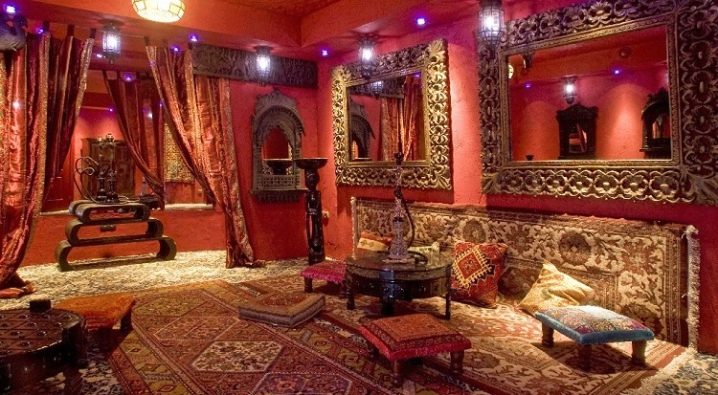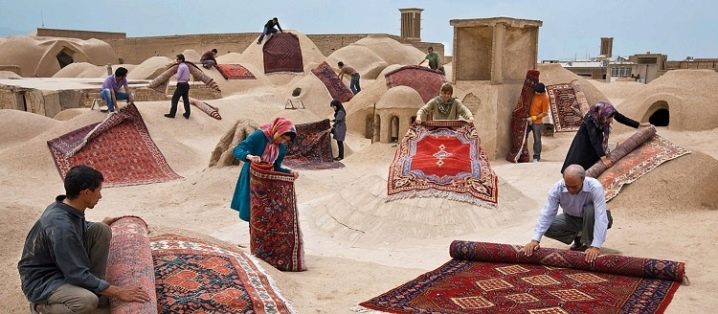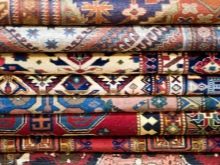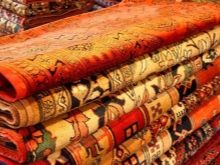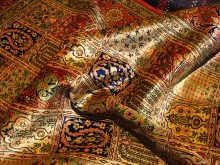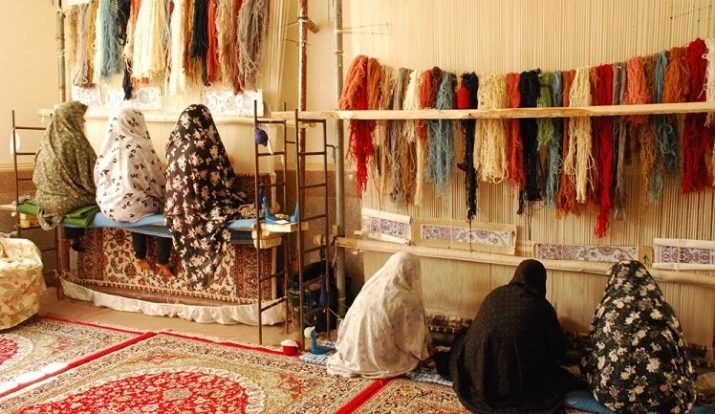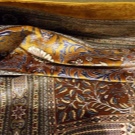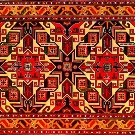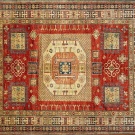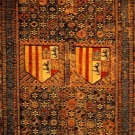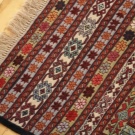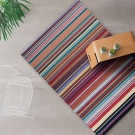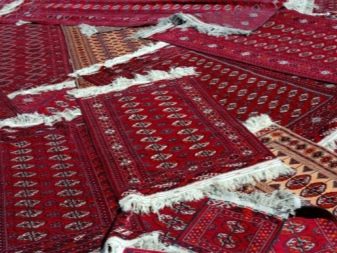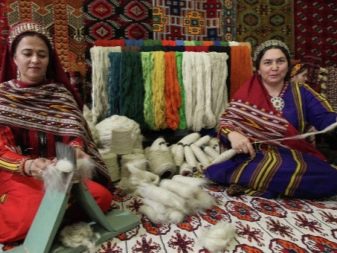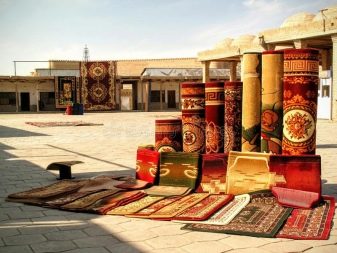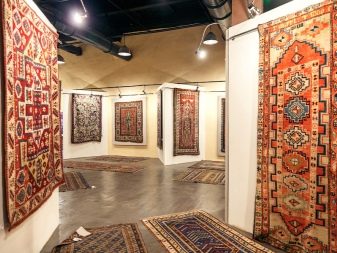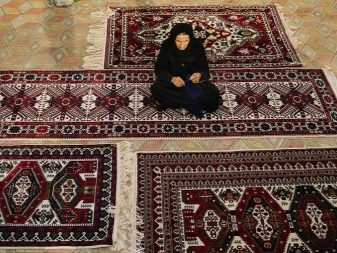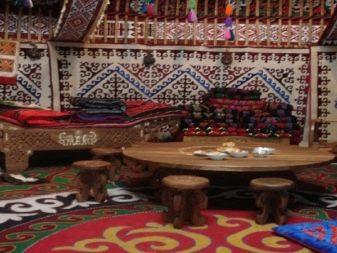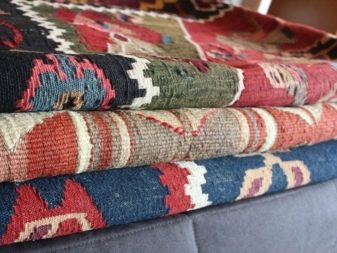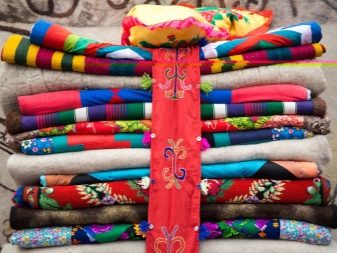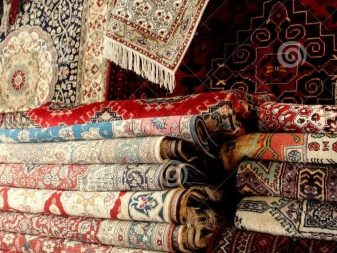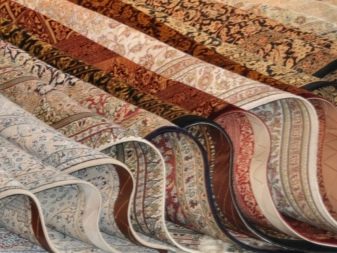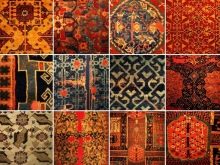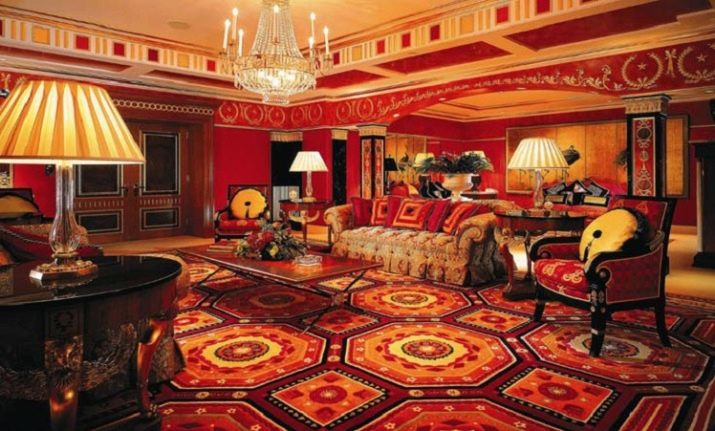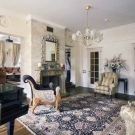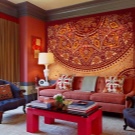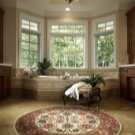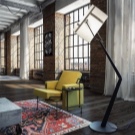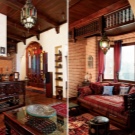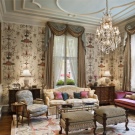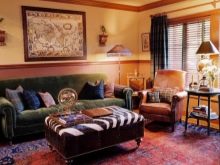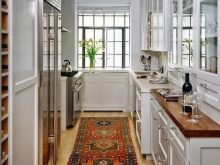Oriental carpets
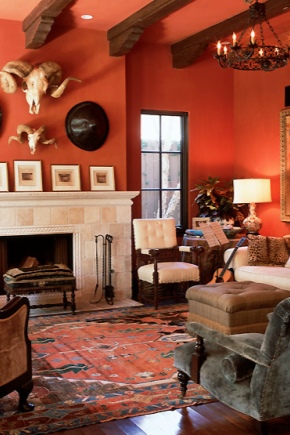
Oriental carpets are no longer exquisite wonder. Now they can be found both in modern studios and in exquisite classical interiors. Many people choose this item of decor, as it not only performs an aesthetic function, but also provides sound insulation and thermal insulation of the room.
Features and history
Oriental carpets are woven products made in the East. However, not only countries geographically belonging to the East (from Turkey to China), but also countries with similar traditions of carpet production belong to them. These include Egypt, the Balkan states, Tunisia, Morocco and Algeria - those states that previously or currently feel a strong "Eastern" influence, which affects their culture.The best suppliers of such products are considered to be Azerbaijan, Turkmenistan and Iran.
Real oriental carpets are always the result of handmade work. They can be woven, woven or felted, but only from natural materials: silk and wool.
In addition, the products are decorated with authentic ornament, which shows belonging to a particular country or region.
Products are woven for 5-6 months, so the price per square meter is quite high - about 200-300 dollars. Those items that are sold cheaper, are fake. Oriental carpets are very valuable all over the world, so many countries have special requirements for their customers. For example, in Azerbaijan, in order to withdraw a purchase abroad, you must first contact the local museum and obtain a license. Also, in many countries, the export of antique carpets is generally prohibited, so tourists prefer artificially aged models.
According to the images that have reached us, we can conclude that woven products were already present in the life of people in the 16th century BC. The first Oriental carpet that lived to the present day was created in the V century BC and was named “Pazyrik”.
It is believed that Persia was the ancestor of carpet making, because, according to legends, for one of the kings, the first carpet in the world was created, consisting of gold threads with precious stones.
But this is still a beautiful legend, and, according to scientists, oriental nomads invented warming woven canvases in order to be able to quickly build a home. Such a house protected from wind and sand and conveniently transported.
When the nomads switched to a settled life, the carpets were re-qualified into exquisite interior items. With the exception of wool and silk, for their manufacture began to use threads of pure gold, flowers made of precious stones and crystal channels. This was the most expensive carpet in history - "Spring", with a pattern of a blooming garden, made by Persian weavers. Unfortunately, it was destroyed in the middle of the VII century.
It remains to add that the products of different eras differed in their decor, sacramental pictures, and selected materials.
Manufacturing methods
There are three main ways to create these true works of art: weaving, weaving and felting.All of them are varieties of handmade.
- The product is called wickerif the yarn is attached to the fabric by woven knots. As a rule, it is covered with nap. The base may be wool, silk, cotton or acrylic. There are various ways of needlework and different names of knots: Persian, Turkish, Tibetan, Berber, Spanish and others. The work is carried out on the frame - a horizontal or vertical knotted machine, which is a classic of carpet production.
- The canvas, which is created from two intersecting systems of threads (longitudinal and transverse), is woven carpet This type usually does not have a nap, and patterns are formed by embroidery. Types of woven carpets differ depending on the place of production and technology: Kelim, Palace, Jijim, Durry, Sumy, Sileh, Firneh, Shaddah. Lint-free used for everyday floor, and nap - to decorate the premises and festive decor.
- Felted carpets are made of wool and used for thermal insulation of the room.
Yarn for woven and woven carpets consists, as a rule, of natural fibers: cotton, pure silk and sheep wool.In some localities, synthetic "additives" are used: acrylic, viscose and others.
Examining antiques, you can also find mohair, goat and camel hair or yak hair. In addition, some specimens are distinguished by the presence of gold and silver wire.
Carpet Types
There are several types of carpets in the eastern key:
- Turkmen. For Turkmen carpets, light and monotonous sheep wool is used. In addition, a repeating pattern in the form of a medallion, an asymmetrical Persian knot and wide strips of patterns on the short sides of the product are used. Maroon shades dominate, and all images are framed with black.
- Uzbek There are three main types of Uzbek carpets: short pile, long pile and carpet.
- “Gilyam” with a short nap is red-brown with geometrical figures of other colors (similar to Kazakhstani products).
- “Juhirs” with a long nap have a simple ornament and bright colors.
- Smooth carpet carpets are often complemented by patchwork patterns. Well-known Bukhara canvases are created in red-brown color and are large.In their middle are octagons, on the edge of which stars are visible.
- Khiva carpets - another variety of Uzbek - are decorated with floral ornaments.
- Armenian In Armenia, a double or “Armenian” node is used, which has existed for 2500 years. Armenian carpets are made of pure sheep wool, angora goat wool, cotton and silk. Coloring occurs with the help of Armenian cochineal, giving the canvases a bright purple color. The canvases depict crosses, stars, dragons, scenes of hunting and battles. The predominance of sacred and religious symbols is a distinctive feature of these products.
- Azeri. In Azerbaijan, both lint-free (kilim, frets, sadd, return, zili and sumac) are woven, as well as pile models, which are distinguished by a rich ornament and knitting method “turkbaf”. There are seven schools of carpet-making, whose products are distinguished by the saturation of color, a variety of patterns and the use of ornaments. Natural dyes made according to old recipes are used for painting Azerbaijani carpets.
- Dagestan. Dagestan carpets are distinguished by originality and originality.Many of them depict portraits, landscapes and monuments of architecture. Products, as a rule, are lint-free and are characterized by special patterned compositions. Derbent carpets - one of the subspecies of Dagestan.
- Kazakh Kazakh carpets can be felted and woven. For decoration using images of geometric shapes and ram horns, which are rhythmically repeated. The compositions also contain images of trees, mountains, waterfalls, wild animals and other ornamental images. Planting and wall canvases are made of felt: tekemets, syrmaks and tuskies.
- Georgian. The most popular Georgian carpets are lint-free “pardagi”, which used to be used as tapestries and hung on the wall. Also widespread products made of felt with colored ornaments. For dyeing used nutshells, chamomile, nettle and other natural dyes.
- Bashkir. Bashkir carpets can be nap and lint-free, as well as the simplest (goat wool carpets). The colors of these products have the advantage of warm tones, but not more than three on one canvas.The patterns on the Bashkir palaces are geometric: octagonal stars, rhombuses and curvilinear plant patterns (in the technique of appliqué, embossing or free embroidery).
- Arab. Moroccan carpets (one of the Arabic subspecies) are variegated, the presence of rhombs, symbolizing a mirror that reflects the eyes of the ill-wisher, and the predominance of yellow and red colors. When weaving used Persian and Turkish knots. Berber carpets are a variety of Moroccan. They often contain symbols telling about the history of the tribe and are woven in villages. They look rough, but in fact they are rather soft.
- Kyrgyz. Brand Kyrgyz carpet made from felt, called "shyrdak." It is performed with the help of mosaic technology, therefore, it takes from two to six months to produce one web. Carpet is made of two types of felt: thick and thin. Color drawing is applied on the top layer, then both canvases are sewn together. The ornament is applied using chalk and then cut with a sharp object (usually with a knife).
- Afghan Afghan carpets of silk and fine wool mountain sheep are known throughout the world.90% of products are exported. Carpets of the Altibolak model are woven from camel wool.
- Carpets "Andkkhoy" - from astrakhan, the central part of this model is either red or dark blue.
- Akhcha models are usually also red, but in modern models green is used for the pattern.
- A distinctive feature of the products "Mazar-e Sharif" - the presence of a traditional ribbon of geometric shapes. The colors of these models range from light to dark red.
- Pakistani Patterns of carpets from Pakistan are graphic, symmetrical and reflect the ancient Mongolian traditions. Products are mainly made in pastel and soothing colors: sand, gold or muted-red. Some use "powdered" paint in order to achieve the effect of antiquity. Traditions for the manufacture of carpets have remained unchanged in Pakistan, so the design of products coincides with that used several centuries ago.
Accommodation in the interior
Oriental carpets fit well in almost any interior. They are always beautiful, differ in a variety of plots, they can be hung on the walls or laid on the floor. Such things are combined with different colors and textures.
If you choose an interior in a classic style, loft style or minimalism, then, of course, such a decor item will be a great addition.
In order to successfully "fit" the carpet into the existing space:
- maintain a uniform palette of colors in the interior;
- stick to neutral decorating. Let the carpet be the center of the picture;
- when creating eclecticism, do not mix more than three stylistic directions;
- be attentive to the choice of the place where the product will be located;
- Watch out for a mix of furniture, walls and coverings.
In this video you will see the process of making carpet manually.
